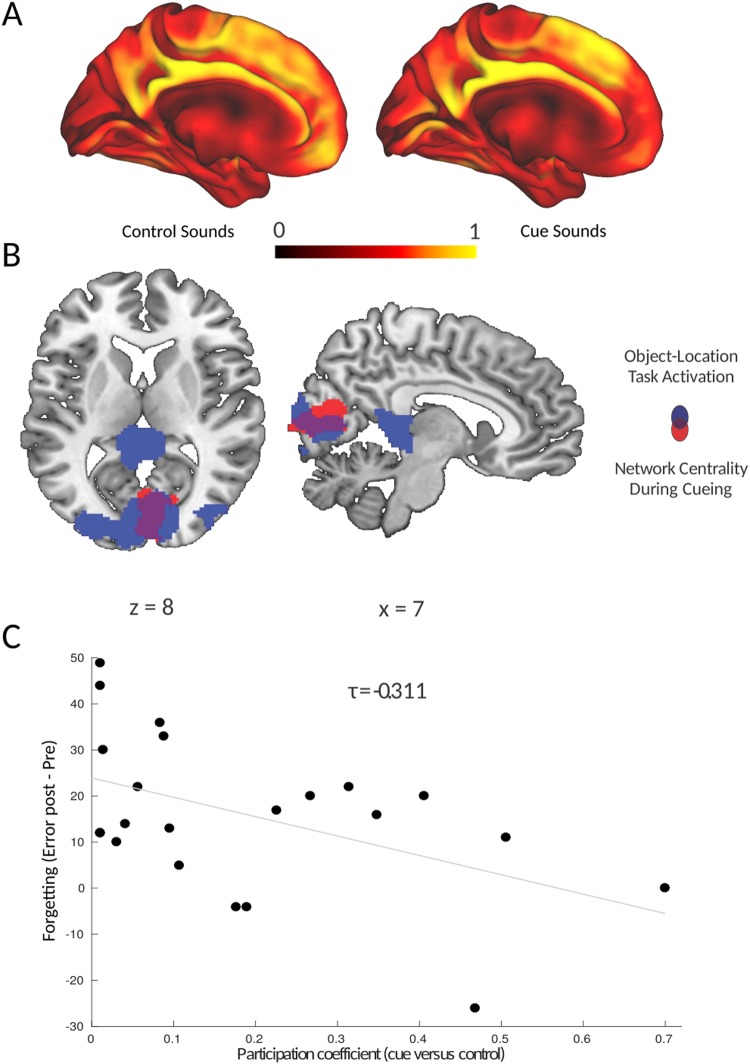Figure 2.
Reactivation-related changes in network integration predict memory stabilization. (A) Participation Coefficient mapped for every voxel in the brain during the presentation of control sounds (not previously paired with object-location information, left panel) and cue sounds (previously paired with object-location associations, right panel). (B) Increased network integration was found only in the occipital cortex during the presentation of cue sounds versus control sounds during slow-wave sleep. This region overlapped with the set of regions activated in response to the object-location association task. Parametric maps were superimposed onto a template brain, using the cluster-forming threshold of Z > 2.33. (C) The increase in participation coefficient of the occipital cortex during cueing predicted memory stabilization, indicated by reduced forgetting (expressed as the difference in error distances) between test 1 (pre) and test 2 (post).

